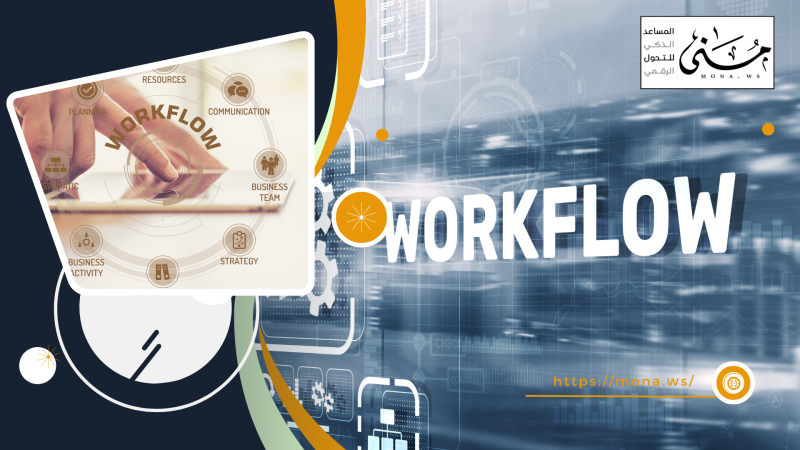Medium-sized companies are always looking to balance providing high-quality services with reducing operating costs, especially in light of economic challenges such as inflation and rising prices of raw materials and energy.
In this context, administrative automation comes as a powerful tool for restructuring operations and reducing waste. In this article, we will review the most important ways in which administrative automation can contribute to reducing costs.

Administrative automation and its role in reducing costs
Administrative automation means using modern technology to automate administrative, financial and operational processes within the organization, which reduces the need for human intervention in routine and repetitive tasks. This contributes to improving productivity, reducing human errors, and saving time and effort.
According to global reports, companies that have adopted administrative automation have seen a 20% to 30% reduction in operating costs within the first year of implementation, in addition to a significant increase in customer and employee satisfaction due to the speed of task execution and improved user experience.
Important statistics about the impact of automation in reducing operational costs
When it comes to the financial benefits of automation, the numbers are strong in favor of digital transformation. Here are some statistics that highlight the cost-cutting impact of administrative automation:
Reduce data processing costsStudies show that companies that rely on automation reduce data processing costs by 50% compared to companies that do not use automation technologies.
Reducing the need for manual laborAutomating routine administrative tasks can reduce the need for labor by 25% to 40%, resulting in significant financial savings without compromising the quality of work.
Improve the speed of operationsAutomation helps reduce the time it takes to execute processes by 60%, allowing companies to perform more tasks in the same amount of time without the need to increase the number of employees.
Reduce costs associated with human errorHuman errors in administrative processes lead to significant financial losses, but with automation, these errors can be reduced by 80%, reducing the costs of rework and data correction.
The numbers confirm that automation is not just an improvement in the administrative process, but an effective strategy for reducing costs and promoting sustainable growth.
The evolution of administrative automation systems and how they have become more efficient
Administrative automation systems have witnessed a remarkable development thanks to the advancement of artificial intelligence, machine learning, and cloud computing technologies. These developments have made automation smarter, more adaptable to the needs of different companies, and have become available with solutions tailored to each sector.
Notable developments in administrative automation include:
Artificial Intelligence and Data AnalysisManagement systems are becoming more capable of analyzing big data and providing accurate insights into company performance, helping to make strategic decisions based on accurate data rather than guesswork.
Integration with other systemsAutomation is no longer limited to separate processes, but rather HR, CRM, and supply chain management systems are interconnected to allow for seamless data exchange, enhancing the efficiency of operations as a whole.
Cloud OperationThanks to cloud computing, companies no longer need to invest huge amounts in IT infrastructure, as they can use flexible cloud-based automation solutions at low operational cost.
Robotic Process Automation (RPA)RPA)This technology allows repetitive operations to be performed automatically without the need for human intervention, reducing the need for manual labor and helping to improve accuracy and speed.
The evolution of these systems has made them more efficient and suitable for medium-sized companies that want to achieve digital transformation in a flexible and affordable manner.
How to Apply Administrative Automation to Reduce Costs
To get the most out of administrative automation, medium-sized companies must adopt thoughtful strategies that ensure digital transformation is smooth and without negative impact on current operations. Here are some effective steps to achieve this:
Analysis of current operationsBefore implementing automation, all administrative processes must be analyzed and tasks that take too long or cause unnecessary costs must be identified.
Choosing the right toolsThere are many automation systems, such as human resource management systems, enterprise resource planning systems (ERP and Customer Relationship Management (CRM) systems, and the systems that fit the company's needs must be chosen.
Training and qualificationTo ensure the success of automation, it is essential to train employees on how to use the new systems effectively to ensure a smooth transition and minimize internal resistance.
Start graduallyYou can start by automating basic processes and then gradually expand to include the rest of the departments, allowing for gradual adaptation to the new technology.
Performance measurement and continuous improvementThe performance of automated systems must be continuously monitored and data analyzed to see how well the goals of cost reduction and efficiency improvement are being met.
Automation has become an imperative for every company seeking to achieve efficiency and reduce operational costs. By adopting smart solutions and taking advantage of modern developments in technology, medium-sized companies can achieve significant savings, improve productivity, and enhance their competitiveness in the market.
Reduce costs through digital transformation
Digital transformation is one of the most powerful tools that companies can use to reduce costs without affecting the quality of service or productivity. It can:
Automate administrative processes and reduce waste
Administrative automation helps eliminate traditional paperwork that consumes employees' time and leads to costly human errors.
Using cloud systems to reduce infrastructure costs
Relying on cloud solutions instead of on-premises data centers helps companies reduce costs associated with purchasing and maintaining hardware and hiring specialized technical teams.
Analyze data to make smarter financial decisions.
Data can play a huge role in reducing costs by providing accurate insights into operational processes.
Reduce internal communication and connectivity costs
Instead of relying on costly phone calls or face-to-face meetings that require time and resources, digital collaboration tools such as professional chat apps, online meeting platforms, and automated email can be used.
Improve customer experience at lower cost
Technologies such as smart chat can be used (Chatbots and automated responses in customer service to reduce the need for large support teams, ensuring a superior customer experience while reducing operational costs.
Modern tools and systems help reduce costs
In the face of intense competition and economic pressures, companies are relying on digital systems to reduce costs and improve work efficiency. Here are a set of tools and systems that help achieve this:
- Doc Sweet (DocSuite)
It is an artificial intelligence-based document management and administrative communications system that allows the automation of administrative processes and reduces the need for paper transactions, which contributes to reducing costs related to printing, storage, and time wasted in document management.
It is an internal communication tool that enhances communication between work teams without the need for expensive meetings or the use of traditional email, which reduces wasted time and improves productivity.
- Zoho (Zoho)
An integrated suite of cloud tools that includes accounting, CRM, and HR software, helping to improve operations and reduce reliance on costly traditional systems.
- Trello (Trello)
A project management and task organization tool that helps improve team efficiency and reduce time wastage, leading to lower operating costs and improved productivity.
- Zapier (Zapier)
An automation system that links different applications together without the need for programming, allowing tasks to be performed automatically and reducing the need for additional staffing or costly manual processes.
- Fresh Box (FreshBooks)
Cloud accounting software helps small and medium businesses easily manage invoices and accounting, reducing financial errors and costs associated with manual accounting.
- Dropbox (Dropbox)
A cloud storage platform that allows files to be saved and accessed from anywhere, reducing the need for expensive storage devices and traditional infrastructure.
Using these tools allows companies to reduce operating costs, increase efficiency, and improve time management, contributing to greater profits with fewer resources.
 الأتمتة ضرورة حتمية لكل شركة تسعى إلى خفض التكاليف التشغيلية
الأتمتة ضرورة حتمية لكل شركة تسعى إلى خفض التكاليف التشغيلية











Comments
Add New Comment